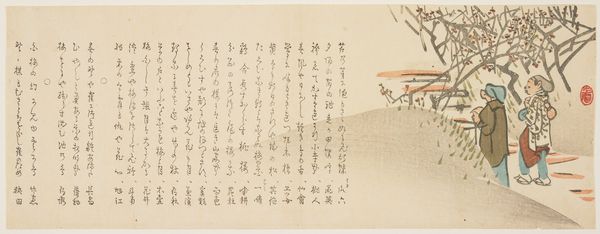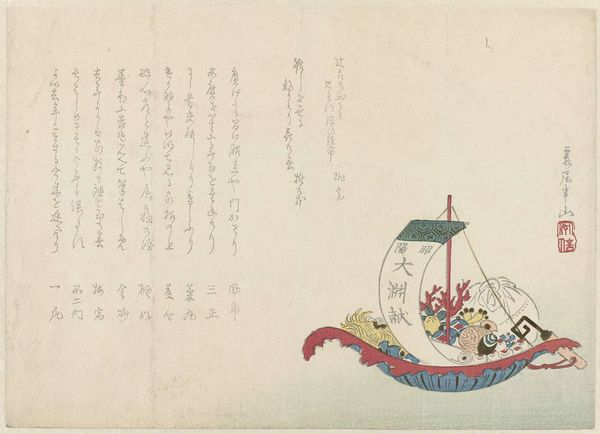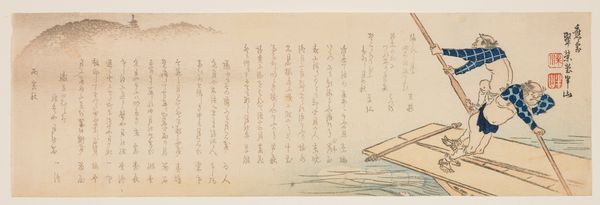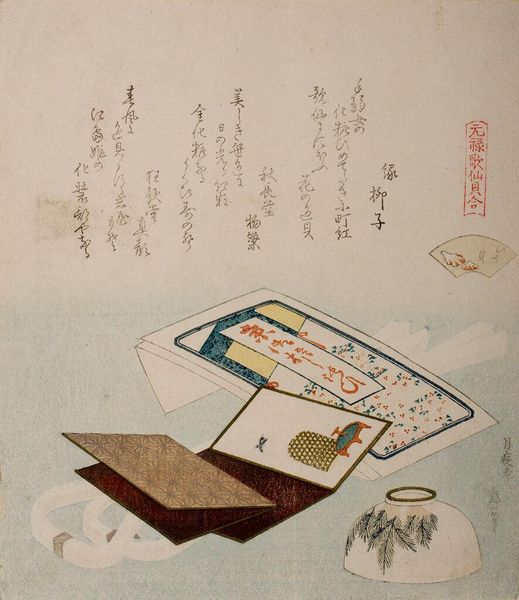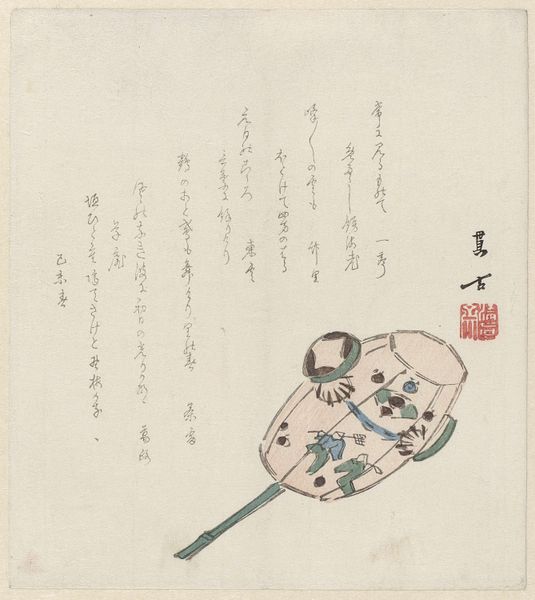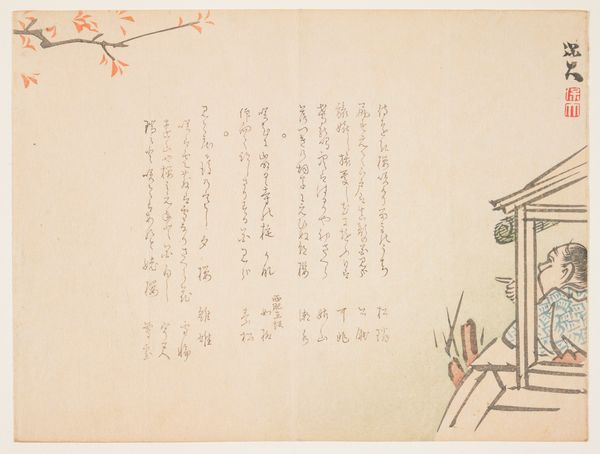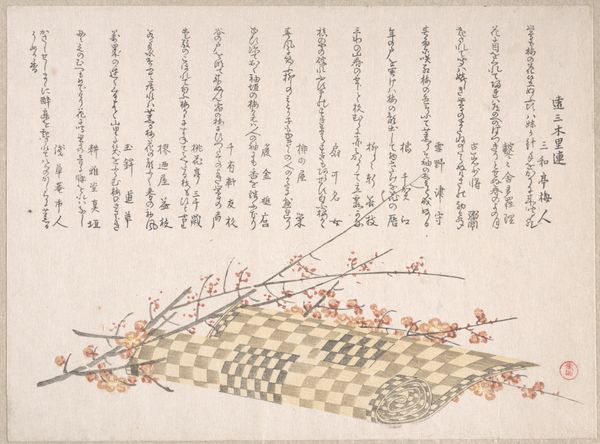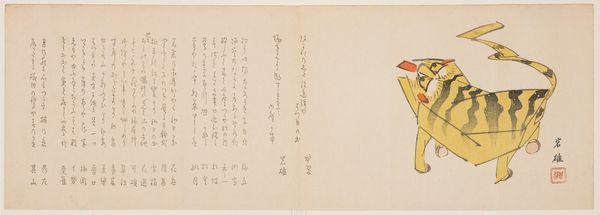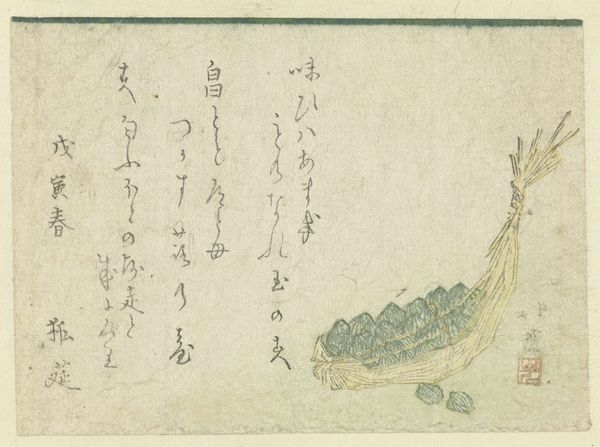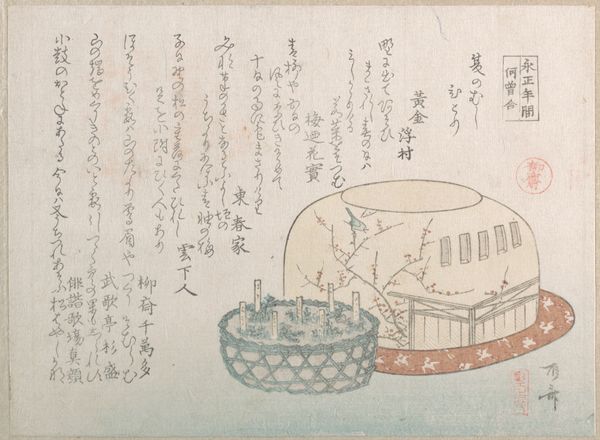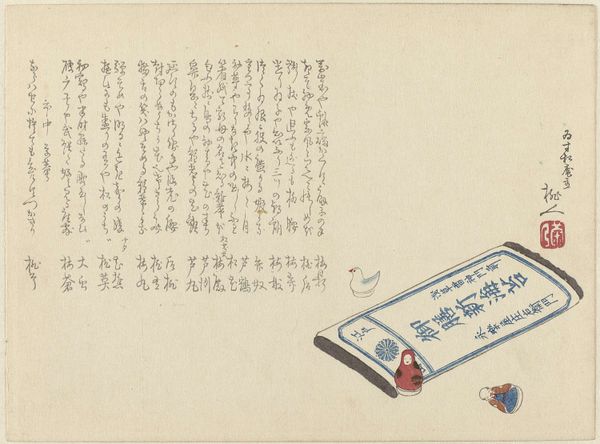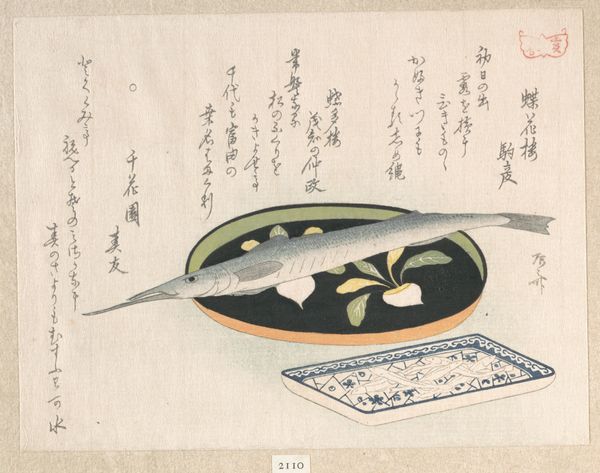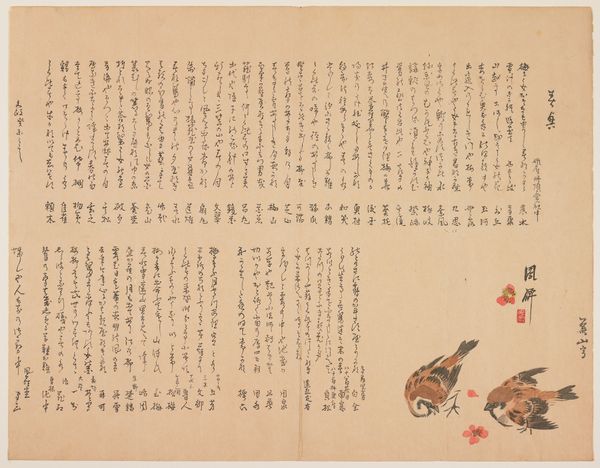
tempera, painting, print, etching, paper
#
tempera
#
painting
# print
#
etching
#
asian-art
#
ukiyo-e
#
paper
Dimensions: height 180 mm, width 257 mm
Copyright: Rijks Museum: Open Domain
This Japanese woodblock print, "Doosje met bloesem", was made by Tanaka Shutei sometime between 1810 and 1858. The print depicts two ornate boxes, one open to reveal a dish of white blossoms. The other box is decorated with a crane, a symbol of longevity and good fortune in Japanese culture. Woodblock prints like this were often produced for a popular audience and distributed widely, so the images and text would have served a social function. They were used to communicate ideas about beauty, nature, and the good life. The blossoms themselves are an obvious reference to the transient nature of existence. Prints like this were made possible by a complex network of artists, publishers, and artisans. Looking into the history of the publishing houses and print guilds that supported artists like Shutei, we can gain a richer understanding of the social conditions that shaped artistic production in 19th century Japan.
Comments
No comments
Be the first to comment and join the conversation on the ultimate creative platform.
